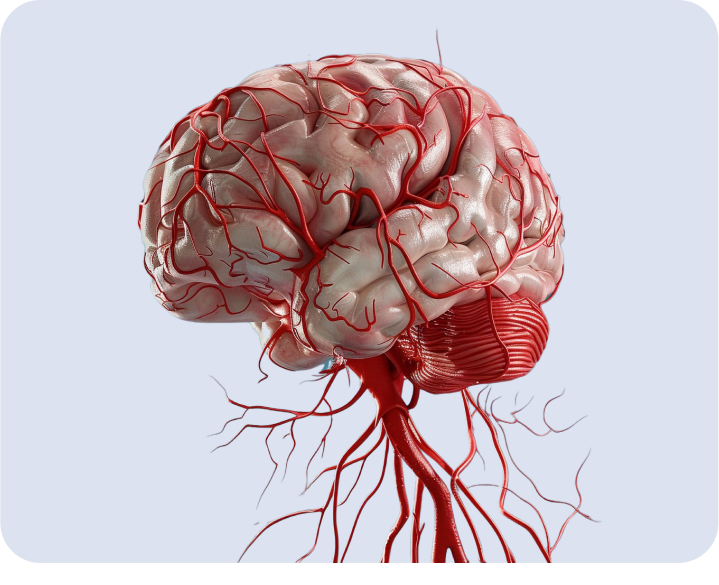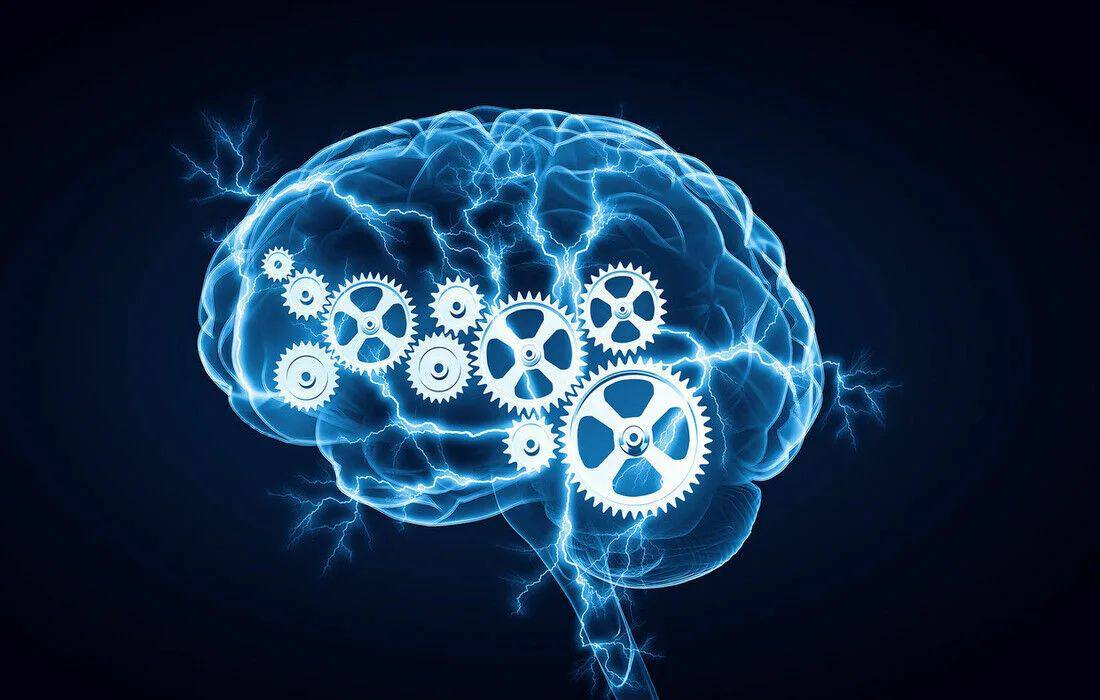Therapy
Registered on ClinicalTrials
Arterial hypertension - oxidative stress as a pathogenetic target of treatment of chronic cerebrovascular insufficiency
Authors:
Chukanova E.I., Chukanova A.S. , Andrianov D.D.
FGAOU in Russian National Research Medical University named after N.I. Pirogov "of the Ministry of Health of Russia
(Pirogov University), Moscow, Russia
Oxidizing stress in pathogenesis of chronic headache
Author:
Fedin A.I.
FGAOU in Russian National Research Medical University named after N.I. Pirogov »Ministry of Health of Russia, Moscow, Russia
Cognitive disorders in patients with arterial hypertension
Author:
Vladimir Vladimirovich Zakharov D.M.N., Professor of the Department of Nervous Diseases and Neurosurgery, FGAOU in the First Moscow Medical University named after THEM. Sechenov "Ministry of Health of Russia (Sechenov University), Moscow, Russia
Place of publication:
a journal of neurology and psychiatry named after S.S. Korsakova, 2024, T. 124, No. 4, Issue. 2
Cognitive disorders in a patient with arterial hypertension in the practice of the therapist. Questions and answers
Authors:
Olga Dmitrievna Ostroumova, MD, professor, head of the department of therapy and polymorbid pathology named after Acad. M.S. VOLISY FSBEI DPO RANMO of the Ministry of Health of Russia, Moscow, Russia
Natalya Andreevna Shatalova, assistant department of therapy and polymorbid pathology named after Acad. M.S. VOLISY FSBEI DPO RANMO of the Ministry of Health of Russia, Moscow, Russia
Cognitive disorders in patients with arterial hypertension
Journal of neurology and psychiatry named after S.S. Korsakova, 2024
The possibilities of using ethylmethylhydroxypyridine of succinate in the complex therapy of arterial hypertension
Authors:
Mikhin V.P., Kostina N.L., Nikolenko T.A., Savelyeva V.V., Chernyatina M.A.
FSBEI in Kursk State Medical University of the Ministry of Health of Russia, Kursk, Russia
Cognitive disorders in the practice of a primary link: Focus for patients with arterial hypertension
Authors:
O.D. Ostroumova, A.I. Kochetkov, N.A. Shatalova
Resolution of the Council of Experts "The possibilities of neuroprotective therapy in patients with arterial hypertension and cognitive disorders"
Presidium of the Council of Experts:
Martynov A.I., MD, professor, academician of the Russian Academy of Sciences, professor of the Department of Hospital therapy No. 1 of the Federal State Budgetary Institution “Moscow State Medical and Dental University named after A.I. Evdokimova "of the Ministry of Health of Russia, President of the Russian Scientific Medical Society of therapists (RNDMO), Moscow
Tanashian M.M., MD, professor, corresponding member of the Russian Academy of Sciences, deputy. Director for scientific work of the FGBN “Scientific Center of Neurology”, Moscow
Malyavin A.G., MD, professor at the Department of Testions and Pulmonology Faculty of Faculty of Faculty of FSBEI in the Moscow State Medical and Dental University named after A.I. Evdokimova ”of the Ministry of Health of Russia, chief freelance pulmonologist of the Ministry of Health of Russia for the Central Federal District, General Secretary of the RND, Moscow
Participants in the Council of Experts:
Bogolepova A.N. D.M.N., head of the cognitive violations department of the Federal Center for Brain and Neurotechnology, FMBA of Russia, professor of the Department of Neurology, Neurosurgery and Medical Genetics of Faculty of Faculty of Faculty of Medicine in the Russian National Research Medical University named after N.I. Pirogov of the Ministry of Health of Russia, Moscow
Borovkova N.Yu., MD, the first deputy. Director of the Institute of Therapy, Professor of the Department of Hospital Therapy and General Medical Practice of the Volga Research Medical University of the Ministry of Health of Russia, Nizhny Novgorod.
Eliseeva L.N., MD, professor, head. Department of Faculty of Faculty of FSBENSI and Kuban State Medical University of the Ministry of Health of Russia, Chairman of the Krasnodar Regional Branch of the RND, Krasnodar
Zhuravleva M.V., MD, professor, professor of the Department of Clinical Pharmacology and Propaedeutics of Internal Diseases of the FGAOU in the First Moscow State Medical University named after THEM. Sechenova "of the Ministry of Health of Russia (Sechenov University), the main freelance specialist - a clinical pharmacologist of the Department of Health of the city of Moscow, Moscow
Zakharov V.V., MD, professor at the Department of Nervous Diseases and Neurosurgery of the FGAOU in "First Moscow State Medical University named after THEM. Sechenova "of the Ministry of Health of Russia (Sechenov University), Moscow
Koryagina N.A., MD, professor at the Department of Clinical therapy of FSBEI in Perm State Medical University named after Academician E.A. Wagner ”of the Ministry of Health of Russia, Vice-President of the Association of Doctors of the therapeutic Profile of the Perm Territory, Chairman of the Perm Regional Department of the RND, Chief Forest Transportist of the Ministry of Health of the Perm Territory, Perm Perm
Mikhin V.P., MD, professor, head. Department of Internal Diseases No. 2 of the FSBEI in “Kursk State Medical University” of the Ministry of Health of Russia, Kursk
Osipova I.V., MD, professor, head. Department of Faculty Therapy and Professional Diseases of the FSBEI in Altai State Medical University of the Ministry of Health of Russia, Barnaul
Ostroumova O.D., MD, professor, head. Department of Therapy and Polymorbid Pathology of the Federal State Budgetary Institution of the DPO “Russian Medical Academy of Continuing Professional Education” of the Ministry of Health of Russia, Moscow
Poznyak A.O., MD, professor, head. The Department of Therapy, Geriatrics and the General Practice of the Kazan State Medical Academy - a branch of the Federal State Budgetary Institution of the DPO “Russian Medical Academy of Continuing Professional Education” of the Ministry of Health of Russia, Kazan Kazan
Portnyagina U.S., Ph.D., Associate Professor of the Department of Internal Diseases and General Personnel Practice (Family Medicine) of the FGOU FGAOU in North-East Federal University named after M.K. Ammosova ”, the main freelance specialist in therapy and general medical practice of the Ministry of Health of the Republic of Sakha (Yakutia), Yakutsk
Statsenko M.E., MD, professor, head. Department of Internal Diseases of the FSBEI in Volgograd State Medical University of the Ministry of Health of Russia, Volgograd
Tyrenko V.V., MD, professor, head of the department and clinic of the faculty therapy of the Federal State Budgetary Institution “Military Medical Academy named after S.M. Kirov »of the Ministry of Defense of the Russian Federation, chief cardiologist of the Ministry of Defense of the Russian Federation, St. Petersburg St.
Chesnikova A.I., MD, professor, head. Department of Internal Diseases No. 1 of the Federal State Budgetary Institution “Rostov State Medical University” of the Ministry of Health of Russia, the main freelance specialist in therapy of the Southern Federal District, Rostov-on-Don
The experience of using Mexidol in the clinical practice of the therapist
Authors:
Martynov A.I., MD, professor, academician of the Russian Academy of Sciences, department of hospital therapy No. 1 of the medical faculty of FSBEI in MGMSU named after A.I. Evdokimova
Gorokhovskaya G.N., MD, professor, department of hospital therapy No. 1 of the medical faculty of FSBEI in MGMSU named after A.I. Evdokimova
Yun V.L., Ph.D., assistant, department of internal diseases of the FSBEI dental faculty in MGMSU named after A.I. Evdokimova
Petina M.M., Ph.D., head of the 2nd therapeutic department, therapist, KDC Medsi, Moscow
Kondrakhina A.P., Ph.D., doctor-clinical pharmacologist, GBUZ GVV 2 DZM, Moscow
Toporkova V.V., Ph.D., AO Medci-2 KDP, G. Moscow
Nikolin O.P., Ph.D., Associate Professor, Department of Hospital therapy No. 1 of the Faculty of Faculty of FSBEI in MGMSU named after A.I. Evdokimova, Moscow
Arterial hypertension: how to help the brain?
Authors:
Zakharov V.V. , Ostroumova O.D. , Propakurazhev A.A.
Place of publication:
Therapy No. 8 (60) 2022
Cognitive disorders of vascular genesis in the practice of the therapist
Author:
P.R. Kamchatnov 1 , R.A. Cheremin 2 , L.A. Scepterova 2 , A.V. Chugunov 1
1 FGAOU in Russian National Medical University named after N.I. Pirogova ”of the Ministry of Health of Russia, Moscow
2 GBUZ“ Center for Pathology of Speech and Neurorebition of the Department of Health of the city of Moscow ”
The effectiveness of Mexidol® in patients with neurological complications of type 2 diabetes
Author:
E.L. Pugacheva
FSBEI in "First St. Petersburg State Medical University named after Acad. I.P. Pavlova "of the Ministry of Health of Russia, St. Petersburg, Russia
The connection of cellular aging, cardiovascular diseases and anxiety disorders
Author:
A.P. Pereverzev
FSBOU DPO RANMO of the Ministry of Health of Russia
Post -infectious asthenia in the era of new coronavirus infection: approaches to drug correction
Authors:
E.Yu. Ebzeeva, O.D. Ostroumova
Federal State Budgetary Educational Institution of Additional Professional Education "Russian Medical Academy of Continuing Professional Education" of the Ministry of Health of the Russian Federation
The importance of identifying and diagnosing signs of brain damage to arterial hypertension
Authors:
T.M. Ostroumova, O.D. Ostroumova
Mexidol® and Mexidol® Fort 250 as part of the sequential therapy for cognitive disorders in comorbide patients with joint pathology against the background of arterial hypertension and coronary heart disease
L.N. Eliseeva, S.V. Kartashova
FSBEI in Kuban State Medical University of the Ministry of Health of Russia, Krasnodar
Biochemical and morphometric methods for evaluating cognitive disorders in patients with type 2 diabetes mellitus
Author:
Samoilova Yu.G., Leiman O.P., Tonskoye O.S., Matveeva M.V., Kudlai D.A., Oleinik O.A., Zhukova N.G., Ratkin K.R., Fimushkina N.Yu.
Place of publication:
Cardiovascular therapy and prevention, 2020; 19 (4)
THE INFORMATION IS INTENDED FOR HEALTHCARE AND PHARMACEUTICAL PROFESSIONALS. THIS INFORMATION IS NOT INTENDED AS A SUBSTITUTE FOR MEDICAL ADVICE.
Source of photos and images Shutterstock.com














